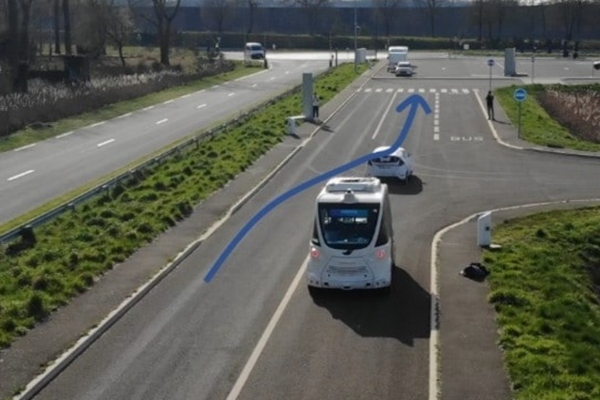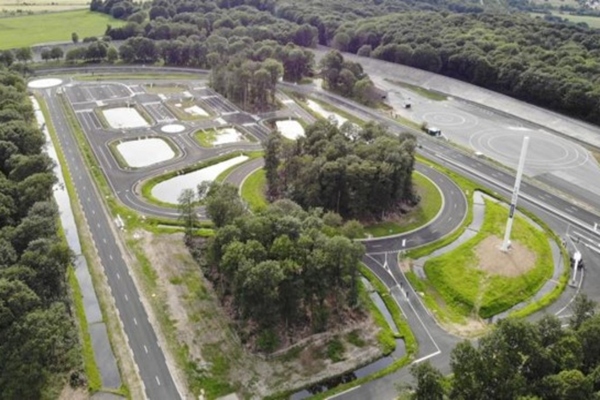Navya strengthens its autonomous driving tech roadmap
The driverless mobility solutions specialist validated technological and safety milestones essential to the deployment of level 4 autonomous Navya shuttles at the UTAC CAV test track in France.
Autonomous mobility solutions specialist Navya is demonstrating the progress it has made using UTAC’s testing and validation environment in France.
It reports that the tests successfully validated technological and safety milestones essential to the deployment of level 4 autonomous Navya shuttles.
CAV testing environment
The tests took place at UTAC Linas-Montlhéry circuit in France on the urban area of the Teqmo testing centre for connected and autonomous vehicles (CAV). It features roundabouts and intersections of various sizes, bike lanes, bus lanes, parking areas, urban signs and even a level crossing.
The site is also covered by a 5G network as well as a network for short range communications.
“Working with UTAC was an obvious choice. Their reputation and reliability in this field is well established, providing Navya with a secure development through a recognised and certified organisation,” said Navya chief technology officer, Olivier Le Cornec.
“The tests conducted at our UTAC Linas-Montlhéry site use all the features of our infrastructure and demonstrate the know-how of our experts and the technologies implemented”
As part of the development of its remote supervision of a fleet of autonomous shuttles, Navya took advantage of UTAC’s infrastructure and high-tech tools to:
- Carry out tests and fine-tune its hypervision in an urban reality-based environment
- Carry out braking tests on a mobile and fixed target with different scenarios such as braking on a vehicle slowing down in front of the shuttle (with several decelerations), and pulling out in front of a vehicle in front of the shuttle (braking afterwards or not)
- To take full advantage of the Euro Ncap crash test equipment and of an installation fully adapted to autonomous vehicles available at UTAC.
- The development and validation of sensors, identification algorithms and braking triggering on comfort or safety profiles based on several scenarios reproduced in a repetitive manner
- The development and validation of the safety behaviour of the shuttles in a controlled, instrumented and safe environment with conclusive results and a successful demonstration
- A successful trial of the technological building blocks required for the remote supervision of a level 4 autonomous shuttle fleet in an urban environment (representative in terms of infrastructure, connectivity and other users).
“We have been working with Navya since the opening of Teqmo in 2019,” said Jérôme Paschal chief technology officer of UTAC. “The tests conducted at our UTAC Linas-Montlhéry site use all the features of our infrastructure and demonstrate the know-how of our experts and the technologies implemented. We would like to thank NAVYA for the trust they have placed in us.”
UTAC was able to demonstrate the potential of its ISO 17025-accredited test laboratories and the expertise of 1,200 engineers and technicians for the validation of autonomous driving systems.
Formed in 2021 after UTAC Ceram and Millbrook in the UK merged their operations, UTAC operates test centres across France, the UK, the USA and Northern Finland.





Leave A Comment